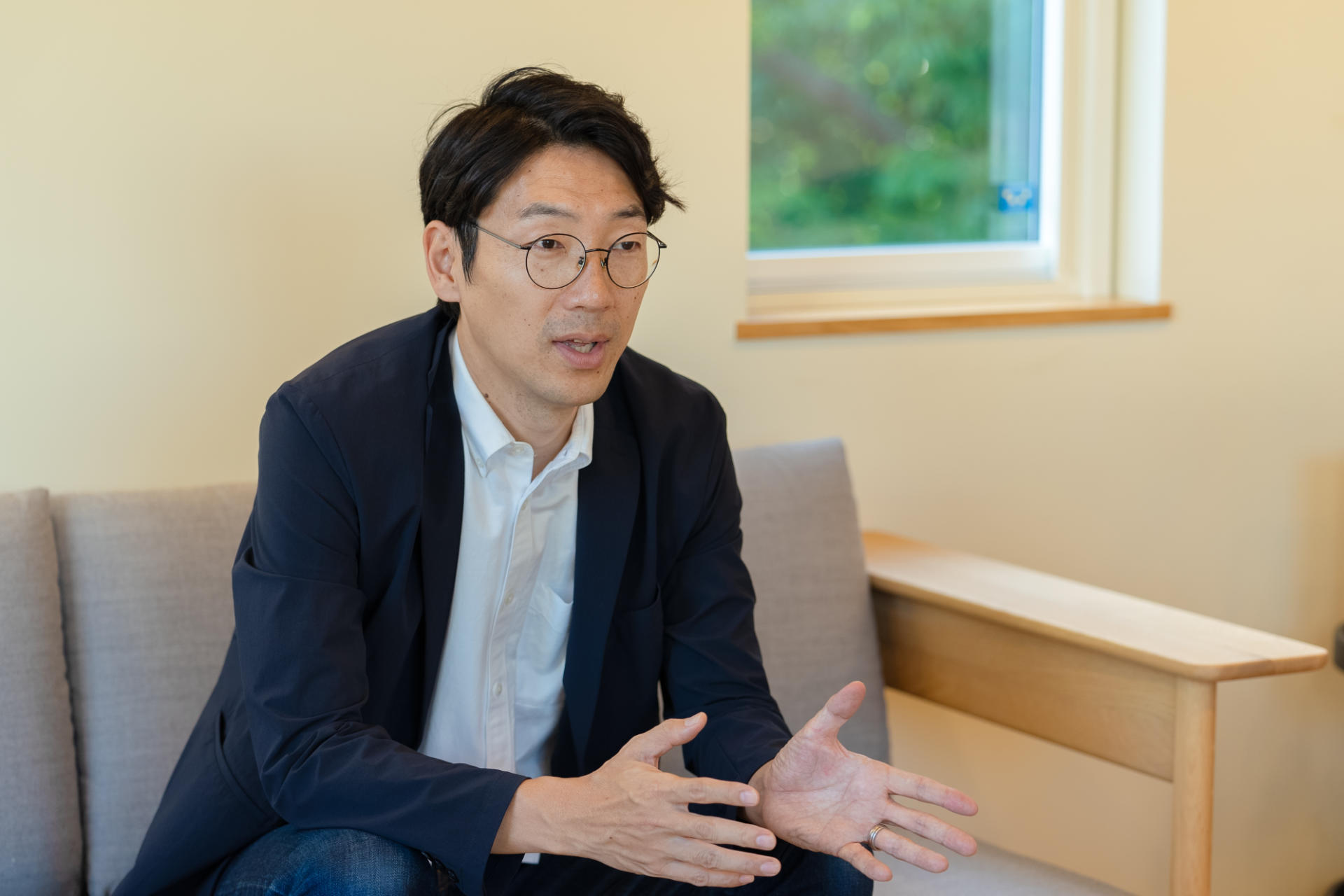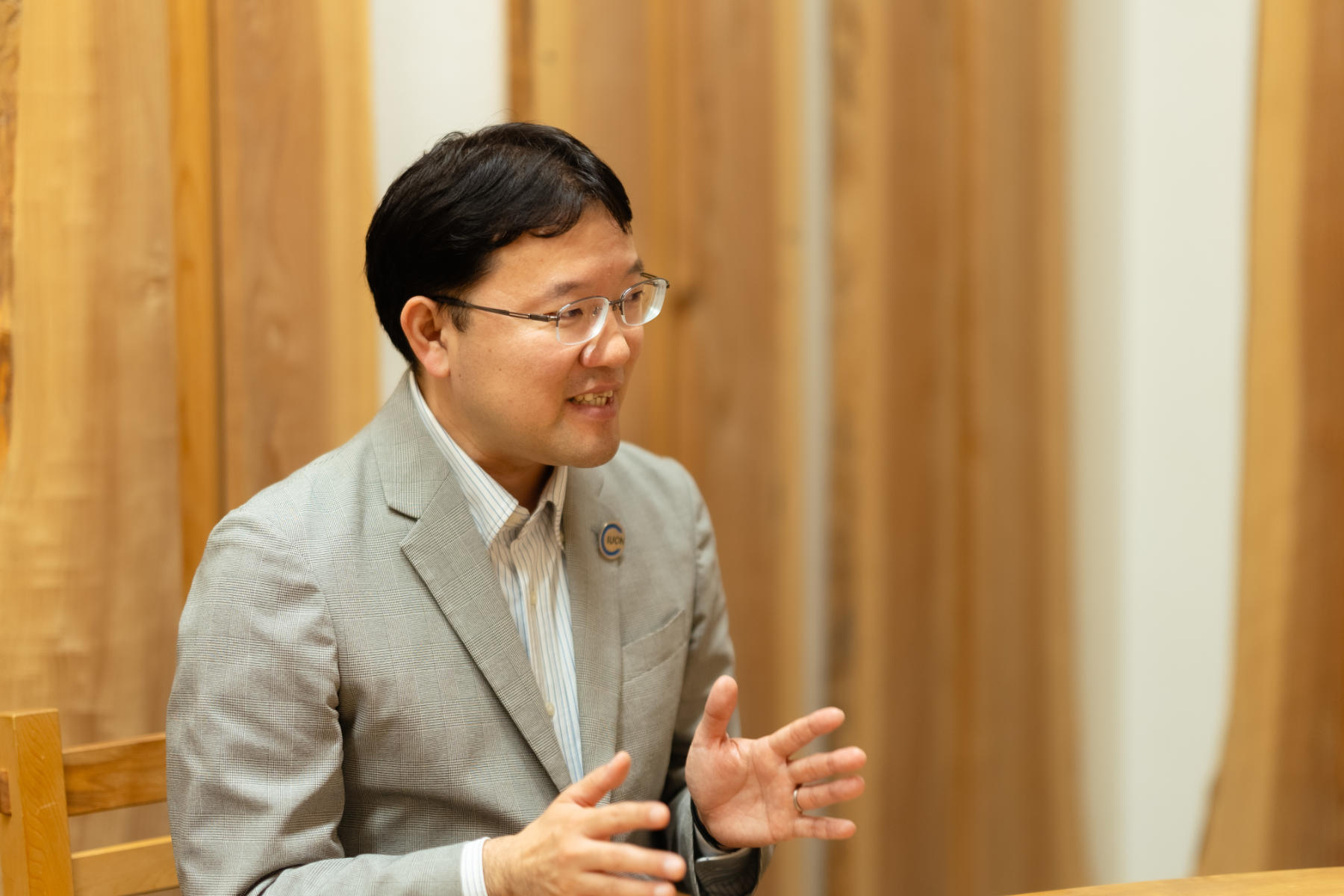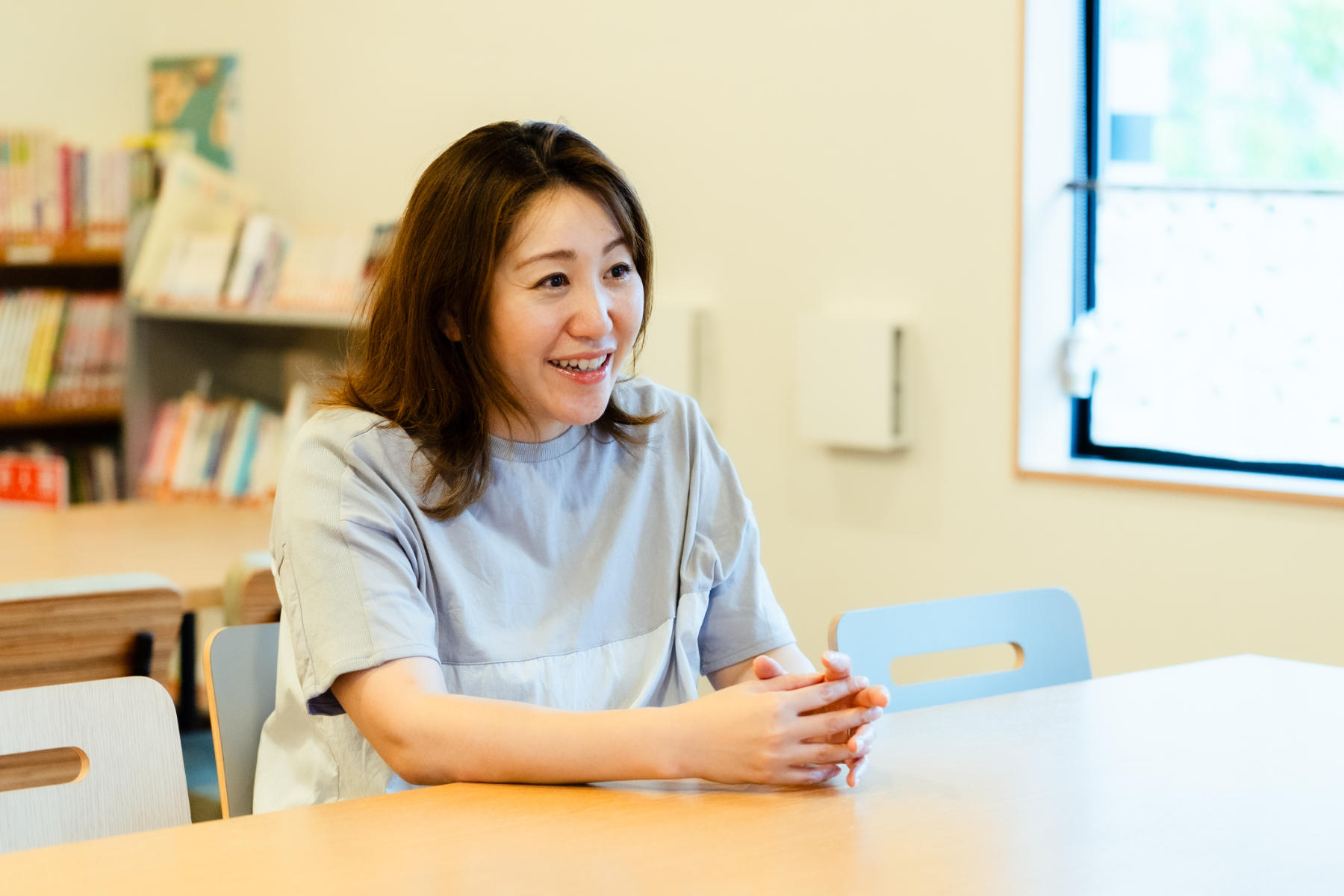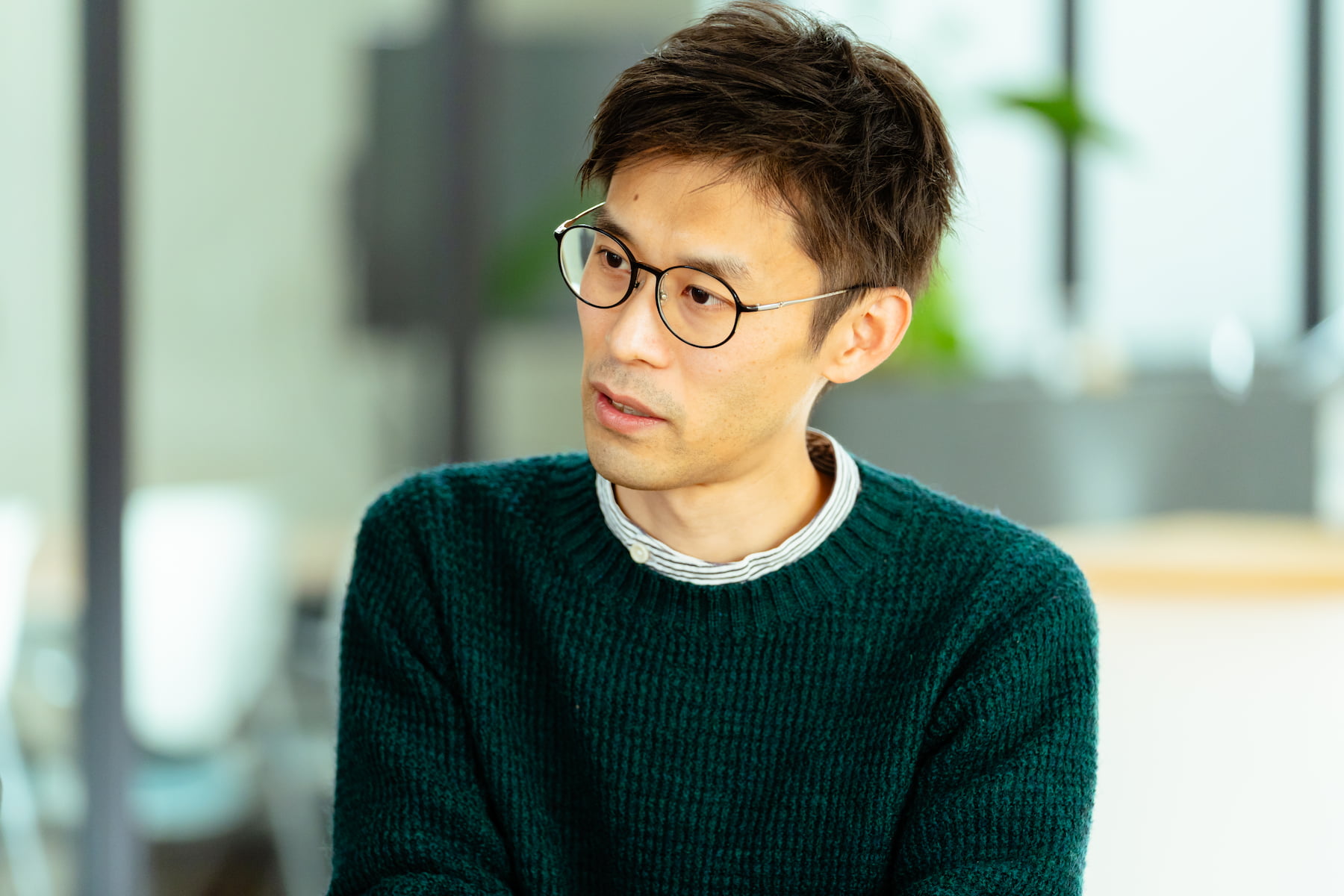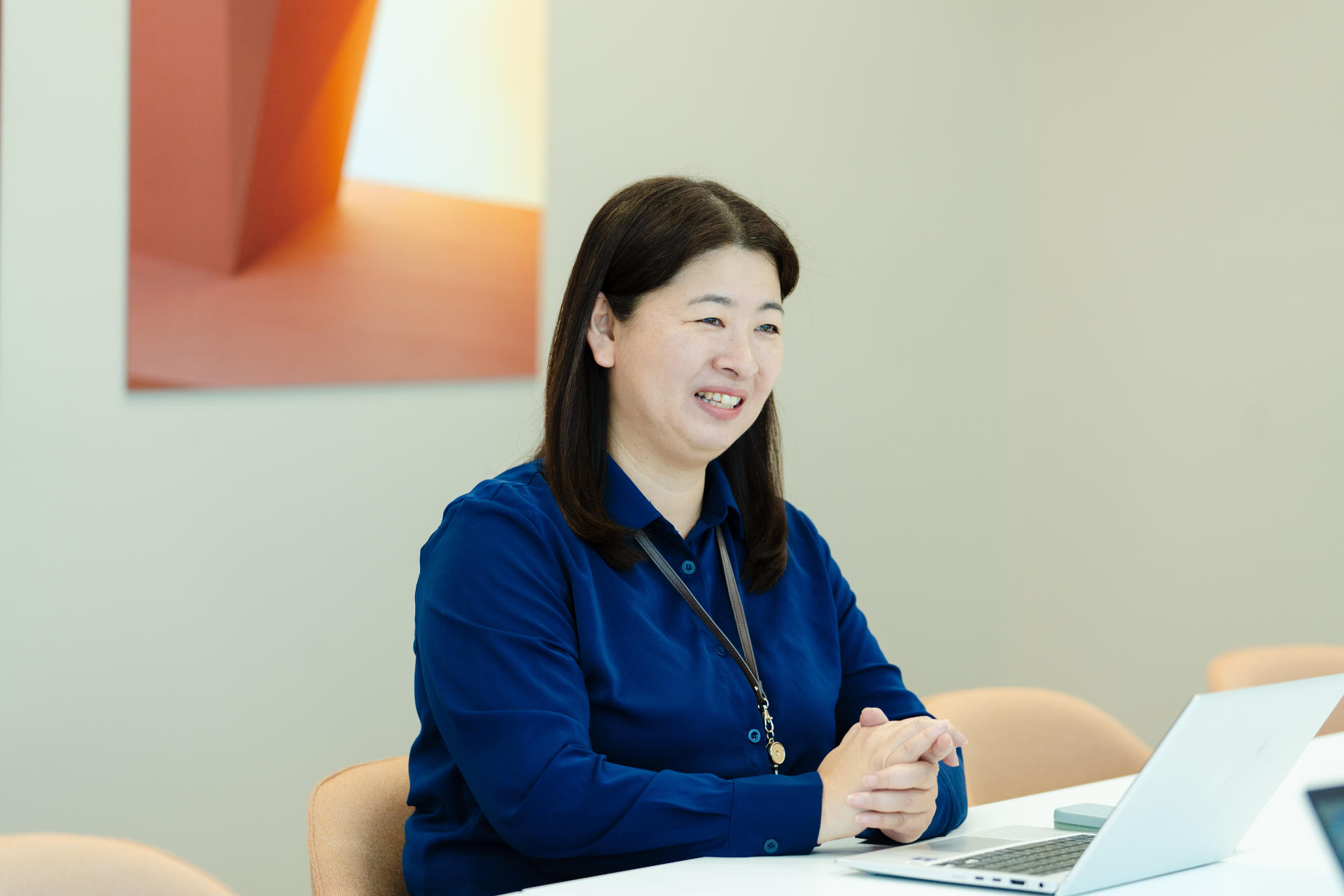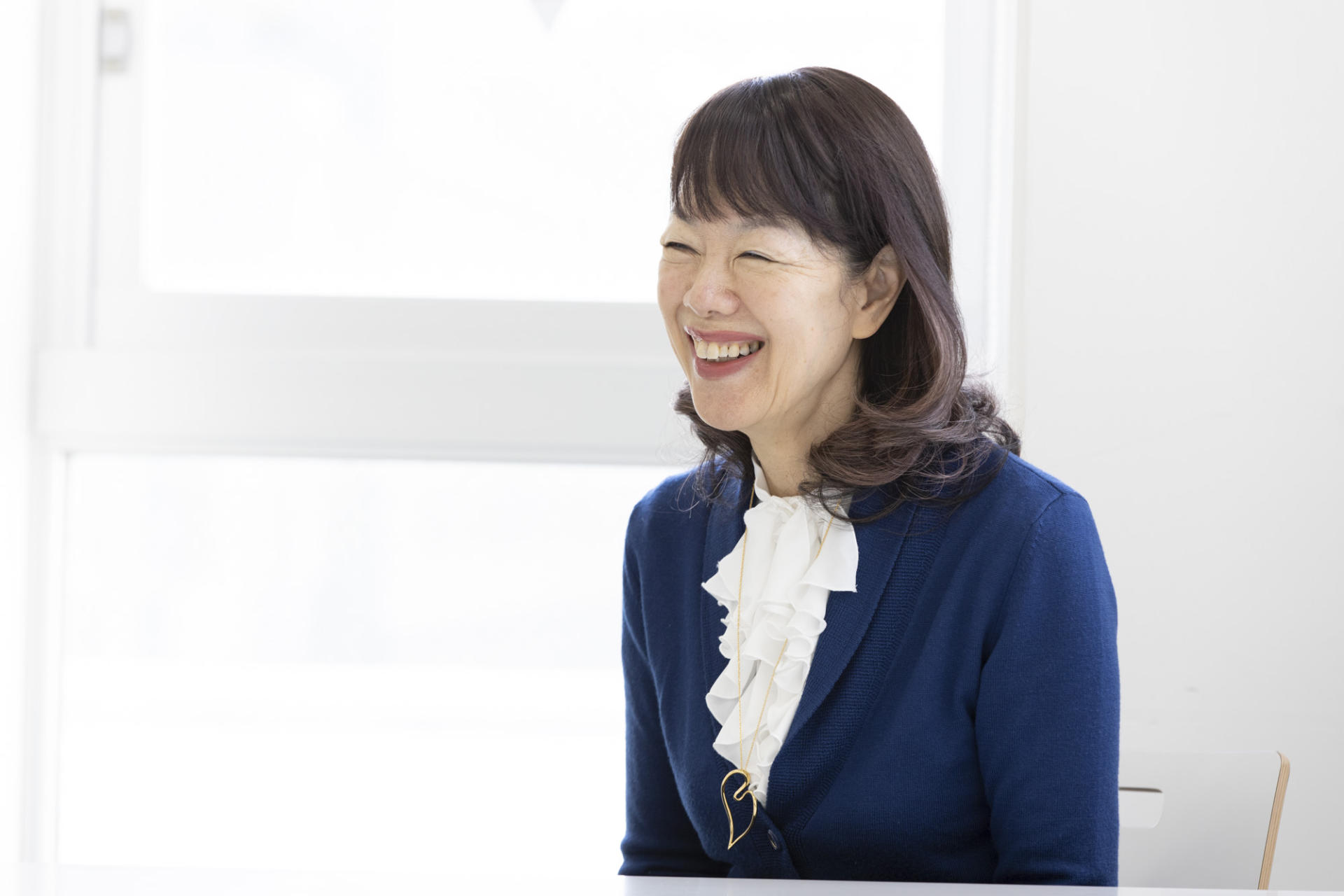CASE 17
HITOMINA Co., Ltd
(March 2019)
Exhibiting at the largest family event in the Tokyo metro area as the only social issue-themed booth represents an exciting new challenge
Hitoshizuku created and patented chart project®, an art enterprise that utilizes line graphs and charts of various social issues and transforms them into artwork.These artworks have been shown in various formats, but this time we were able to display the work at KAZOKUMIRAIFES 2019, Tokyo’s largest family event with over 24,000 attendees. The chart project booth set a new record with approximately 200 participants who viewed the art exhibition and participated in our workshop. Event director Ms. Naoko Sugiyama originally contacted us to exhibit, so we caught up with her to look back over the collaboration.
“Once we decided on the theme of ‘freedom’ for the event, chart project came to mind.”
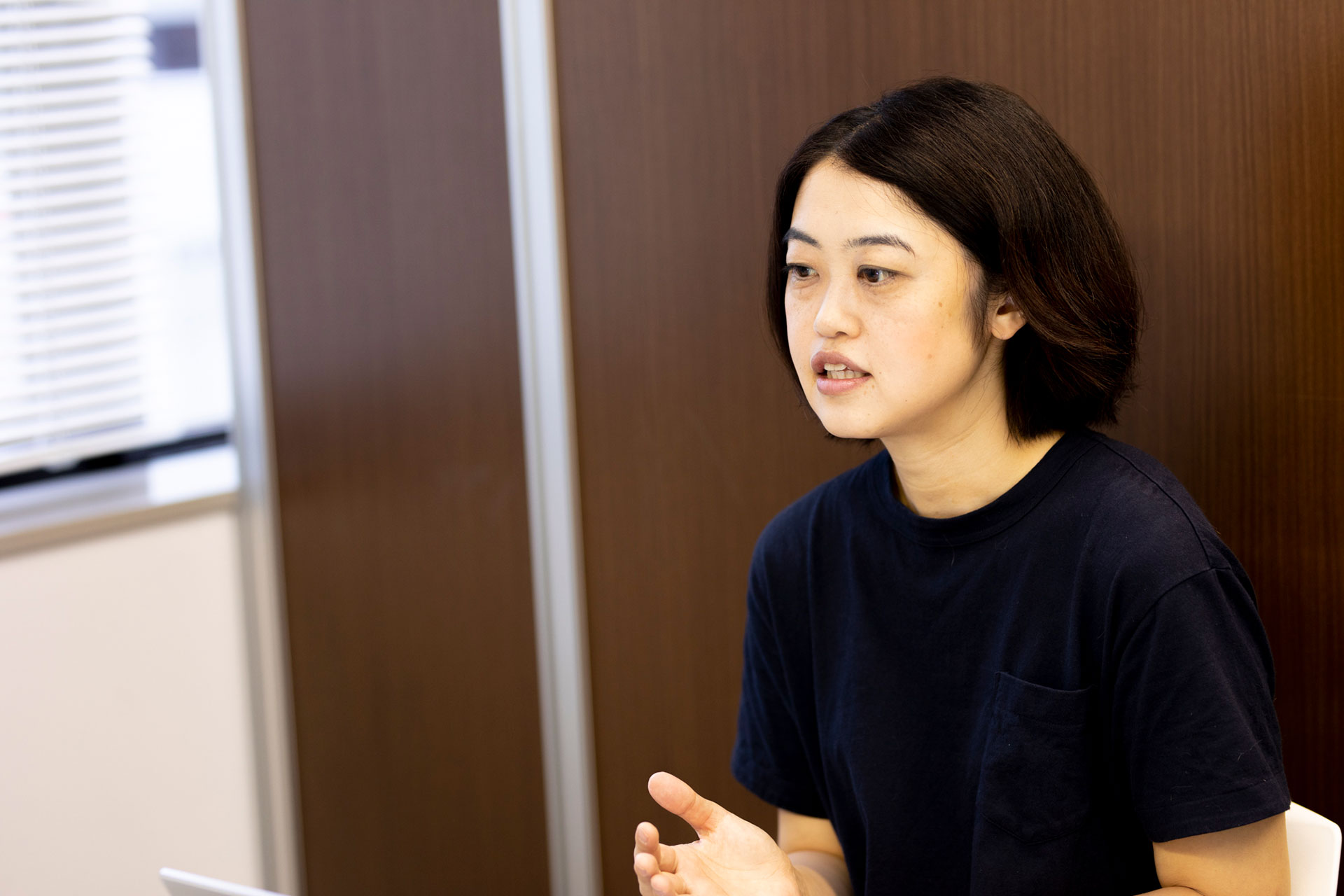
Ms. Naoko Sugiyama, Representative Director, HITOMINA Co., Ltd
Rieko Sato, Hitoshizuku supervisor (Sato):
HITOMINA is a company that provides family information, PR support, and event planning. Hitoshizuku has been working together with you for a while now, but could you tell us again what led to our partnership?
Ms. Naoko Sugiyama, Representative Director, HITOMINA Co., Ltd (Ms. Sugiyama):
I met Hitoshizuku’s President, Mr. Kokubo, about 3 years ago at a KUMIKI PROJECT’s event, a national DIY renovation workshop that Hitoshizuku was doing PR for. After that initial meeting, Hitoshizuku came to HITOMINA to ask us to write for one of their events, which in turn led to other project opportunities and a mutually supportive business partnership.
Sato:
It’s been great working with you up until now. We had the opportunity to present chart project at KAZOKUMIRAIFES 2019 at the Tokyo International Forum in March of this year. To start, could you give us another overview of KAZOKUMIRAIFES?
Ms. Sugiyama:
KAZOKUMIRAIFES is an event that’s been held since 2017 as a collaborative project between Mom’s Lab and JAPAN FAMILY PROJECT. The idea is to create a space that allows attendees to envision what a family will likely experience in the near future.
Although families are the primary attendees of this event, the idea is not to simply have them experience one thing after another, but rather to have them leave with a sense of recognition – I think this might be what ties into future goals, and it might be what makes a more convenient future possible to achieve. In any case, the event began around the concept of getting families excited about what the future may hold.
Sato:
So that’s what’s been the driving force behind KAZOKUMIRAIFES. Moving on, what was it that led you contact chart project about exhibiting at this event?
Ms. Sugiyama:
KAZOKUMIRAIFES was entering its third year in 2019, and the sub-theme for that event became “think freely, act freely.” As we were deciding on the content for each of the event booths, we thought it would be nice to have a workshop based on the theme of “freedom.” We had a format, but we were looking for something where attendees would be able to freely determine how the workshop unfolded. That was when Hitoshizuku’s chart project immediately came to mind.
Sato:
Thank you so much! So we were put forward as a possible exhibitor once this year’s event theme was determined, correct?
Ms. Sugiyama:
That’s right. I really wanted the children who attended the workshop to experience an awareness of social issues. This process of recognition was something that could be achieved through independent art making based on those issues.
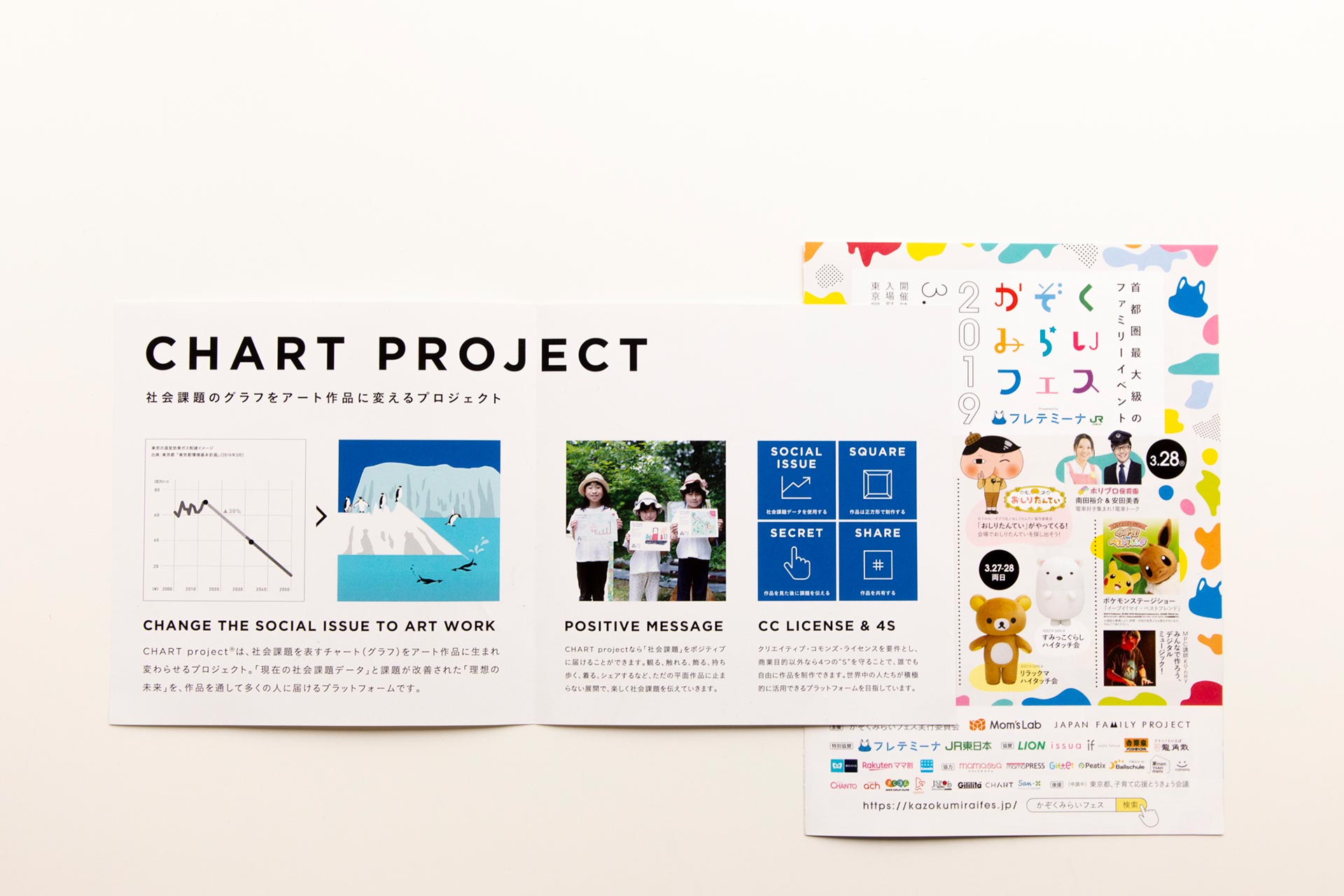
The chart project®︎ booth was displayed as part of the “future living” category, one of many topics at KAZOKUMIRAIFES 2019
Sato:
We put a lot of importance on spontaneity and not imposing our viewpoint on the participants, so it’s great to hear how that aligned with your own thinking. This was a new opportunity for Hitoshizuku as well, since we were able to create new artwork through chart project, in addition to this being the first time to exhibit at a public event. As we started preparing, the first thing we did was gather social issue data that would become the basis for the artwork. We decided to look for graph data about children, since this is the overall focus of KAZOKUMIRAIFES.
Ms. Suiyama:
I was really happy when I learned that.
Sato:
It’s great to hear you say that. After that, Save the Children Japan, an international NGO focused on supporting children, provided us with graph data that describes the changes in relative poverty rate among Japanese children. The line graph from this data is what we used as the basis for the artwork.
We had two artists who used this data. You introduced us to the illustrator Yuko Kimoto, and Hitoshizuku reached out to an artist collective called r2 who primarily create picture books. These two groups of “chartists” each created a piece based on the graph data.
Ms. Sugiyama:
It was really interesting to see the two results. Despite the fact that they were using the same social issue graph data, it made me aware of how viewpoints and methods of expression can vary depending on the person. Do you usually have artists use the same data when creating work through chart project?
Sato:
To be honest this was the first time we’d tried having two separate groups create work off of the same set of data. As part of the creation process, we introduced the chartists to representatives from Save the Children which allowed them to directly explain the background behind the poverty rate that the data expressed. It was an opportunity for us to try something new. The work was incredible and we got a lot of positive feedback. We’re so thankful that you reached out to us about exhibiting.
Developing a workshop that emphasizes embodied knowledge through play over intellectual understanding.

At the event booth there was both an exhibition of the artwork created by chartists Yuko Kimoto and r2, as well as a workshop where participants could create their own unique art. We handed out pieces of paper with only a single line on it made from social issue graph data. Participants then created their own unique drawings based off of the social issue expressed through the line.
Ms. Sugiyama:
Over the course of 2 days, the chart project booth had over 200 participants. It seemed like things were really lively there!
Sato:
We actually had a lot more people who were interested, but we wanted to make sure we focused on each individual attendee and properly explain what chart project was all about. We didn’t want to just start randomly handing out pamphlets, so we made the decision to only give them to people once we’d explained the project. Rather than have a lot of people with a superficial understanding of the project, we decided we wanted to focus on a depth of understanding among a more limited group.
Ms. Sugiyama:
I see. I thought that maybe you could have had more people stop by your booth, but I understand now why you approached the event in this way. During the 2 days of the event I had to manage the entire space, so it was difficult to find time to stop by the chart project booth. What was the reaction from the children and parents who participated?
Sato:
For small children I think it’s a bit unrealistic to expect them to understand the social issues behind the project, but by sufficiently explaining things it seemed like the parents recognized that our workshop contained an element of learning. Additionally, it’s not simply about study, but rather through play and drawing children can naturally come into contact with the social issues behind the graph data, which leads to an embodied understanding of the ideas rather than merely an intellectual one.
Ms. Sugiyama:
It’s pretty great that the first chart that these children will learn about in their lives is from a chart project art work. If children are able to naturally come into contact with these social issues from a young age, I think their awareness of it will change as they grow up.
Sato:
Agreed. It’s different from how middle school and high school children learn about social issues through textbooks. This way it’s much easier to get them interested in the subject. However, this workshop wasn’t really about getting the children to gain a deep understanding of these issues. It was more about reaching out to the parents who were watching the workshop take place. We set up a lot of chairs at our booth so that parents who were tired from walking around the event hall could take a break and really spend some time looking at the artwork.
Ms. Sugiyama:
As I mentioned before, the concept behind KAZOKUMIRAIFES is to bring parents and children to a realization through experience. This seems to be exactly the same for chart project, where the approach is not to express ideas through words, but rather to allow participants to reach an understanding through an experience. I think this is something that’s going to make people consider the issues we’ll be confronting in the near future.
Sato:
It’s really wonderful to hear you say that. Since there wasn’t a lot of content at KAZOKUMIRAIFES 2019 based around social issues, I think it was significant that we were given the opportunity to exhibit. Chart project isn’t flashy, but I think we brought an element of uniqueness to the overall event and were able to leave an impact.
Ms. Sugiyama:
I agree. To be honest, when I first heard about chart project, I had questions about how it would be developed as a business. But Hitoshizuku has poured a lot of time and effort into the project, and through this collaboration I feel like I understand now how chart project will be developed going forward.
Even after the event, the chartist artwork continues to make its way around the world
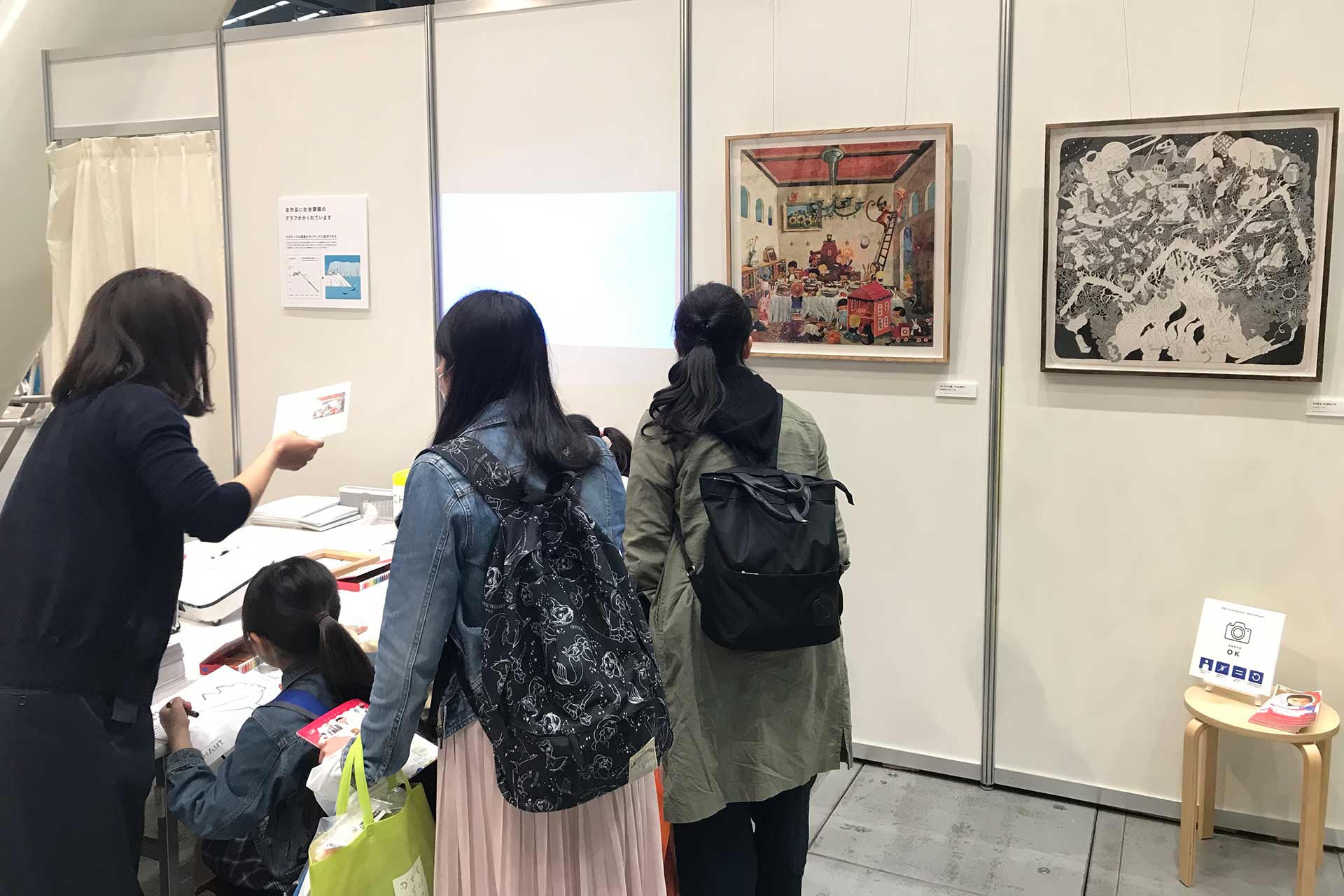
Angles Holiday by r2 (L) and Full of dreams by Yuko Kimoto (R), both created for KAZOKUMIRAIFES 2019. After this event, the work was exhibited at a charity dinner hosted in honor of Save the Children’s 100 year anniversary.
Sato:
The work that was created for KAZOKUMIRAIFES 2019 has continued to have an impact in various places. Through the connection to Save the Children and their generosity with providing us with the graph data, r2’s work ended up being displayed at a charity dinner celebrating the 100 year anniversary of Save the Children’s founding. Not only that, but Crown Princess Kiko of Akishino and her daughter, Princess Kako were both shown on the news reading the explanation panel next to the artwork.
Ms. Sugiyama:
That’s amazing! Did Save the Children reach out to you about borrowing the artwork?
Sato:
Yes, they were really impressed with the work and contacted us about displaying it. Chart project artwork has a powerful presence as a painting, so it’s a good match for something like a charity dinner. In July we presented both pieces from KAZOKUMIRAIFES 2019 at our first international exhibition held on Sweden’s Gotland island called “chart project® for SDGs in Sweden.” Yuko Kimoto’s work is extremely popular with the locals. There’s a lot of interest in Sweden around Japanese manga culture, so a lot of people were sharing her work on social media and pointing out how her artistic approach is reminiscent of manga.
Ms. Sugiyama:
It’s great that chart project decided to focus on art as a tool for expression. It means there’s no need to translate words; the work itself can travel around the world and has the advantage of still being approachable for anyone.
Sato:
Originally our idea had been to come up with a way to develop the project internationally without the need for language, so we had all of the artwork created in a square format so that it would be easier to share on Instagram. We were so happy to hear about the reaction the work got in Sweden.
Ms. Sugiyama:
It’s really a wonderful project. I’ve personally been thrilled to hear about how chart project has been developing since KAZOKUMIRAIFES 2019. I can’t wait to see what comes next.
Sato:
Thank you very much. In addition to the 2 artworks that were shown at KAZOKUMIRAIFES 2019, I think chart project has the potential to gain attention from a lot of different places around the world. If there’s ever another opportunity to work together, please don’t hesitate to let us know.

From left: Ms. Sugiyama from HITOMINA and Sato from Hitoshizuku
Photography: Chisato Hikita
Editing: Akiko Yoshida
RECENT WORKS
| Name | Hitoshizuku Inc. |
| Address | 33 Nihonodori Naka-ku Yokohama Kanagawa 231-0021 JAPAN |
| Branch | Hamacho Odawara Kanagawa 250-0004 JAPAN |
| Phone | 81 045 900 8611 |
| info@hitoshizuku.co.jp |
| President | Hiroshi Kokubo |
| Established | March 2016 |
| Capital | 3,000,000yen |
| Business | Advertising & Public Relations Agency Planning & Produciton of Social Good Projects |
| Lawyer | Junna Tei / Yokohama First Law Office |
| Tax Advisor | Satoru Motokoide / Uniques Money Advisory |
| Labor and Social Security Attorney Office Work Innovation | |

